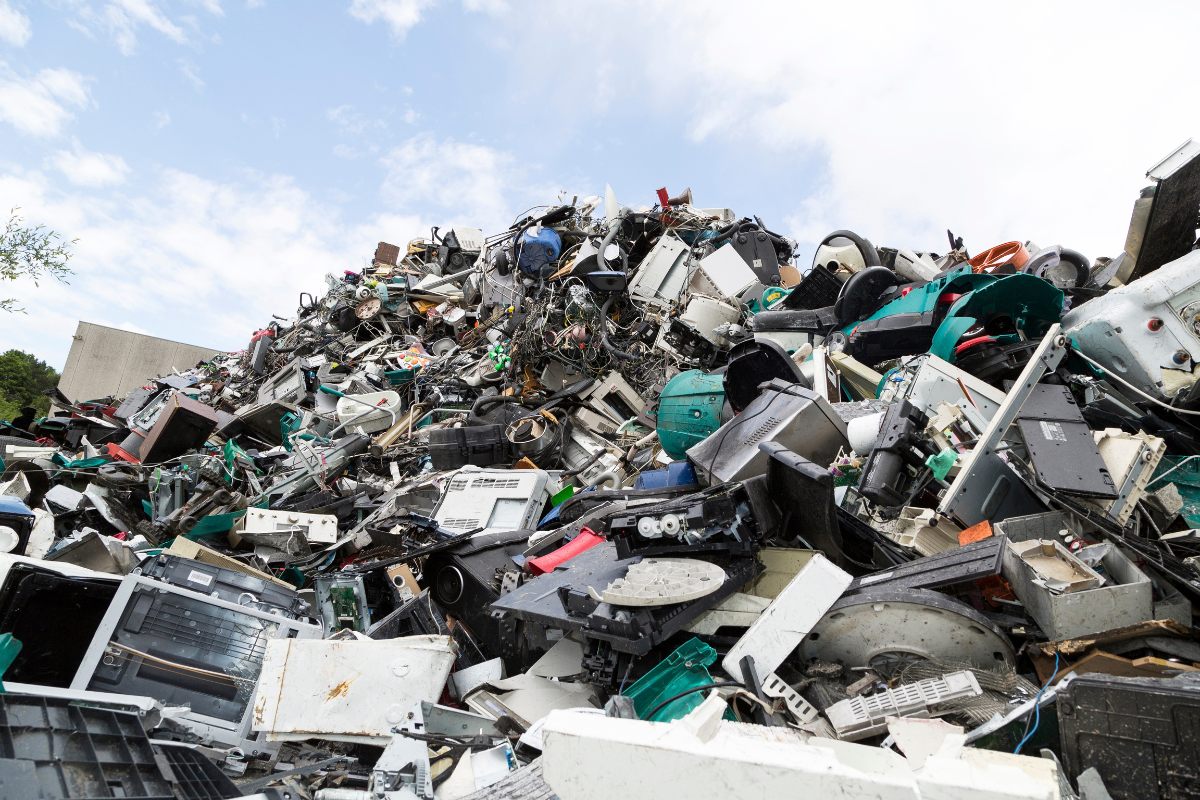
The U.S. Department of Energy’s Electronics Scrap Materials Recycling Prize is a multi-phase competition for a range of electronics recycling industry players. | Morten B/Shutterstock
A technology manager with the U.S. Department of Energy said improving e-scrap management fits squarely within the federal government’s material sourcing and climate goals. That’s why the agency has launched a new funding and technical assistance opportunity targeting electronics recovery.
The Energy department on March 6 announced the Electronics Scrap Materials Recycling Prize, or E-SCRAP. It’s a competition for a broad range of applicants connected to the electronics recycling industry, with multiple phases highlighting different stages of project implementation.
Jeremy Mehta, technology manager within the department’s Advanced Materials and Manufacturing Technologies Office, said the department has invested in a number of e-scrap recovery-related projects over the past decade, particularly in the separation and material extraction stage. For example, the department is a funding partner of the REMADE Institute, which supports research and development related to recycling, reuse and remanufacturing. Other government branches including the U.S. military have also funded such efforts.
The E-SCRAP prize aims to build on that work and connect it to other segments of the end-of-life electronics sector.
“We see this prize as being an effective tool to bridge some of the different players that exist along the value chain, from collection to sorting, to concentration, to preprocessing, to actual separation and extraction,” Mehta told E-Scrap News.
Validating and benchmarking the output material, and ultimately getting it back into new electronics to replace virgin material, are further areas of interest, Mehta added.
The department believes building connections between these diverse parts of the electronics recovery sector will highlight opportunities to optimize processes, share information and overall improve the economics of recovering, preparing and reusing metals in electronic devices.
“It’s a fragmented value chain,” Mehta said. “And we’re trying to defragment that.”
Prize comes against ‘critical materials’ backdrop
The federal government has narrowed in on electronics recovery in numerous ways in recent years, almost all tied to an interest in securing much-needed feedstocks. For example, in 2021 the Biden administration advised that the federal government should encourage design for recyclability in consumer electronics and support technologies that recover rare earth magnets from hard drives. His administration also pushed for increased government support of the domestic recycling industry.
The needed feedstocks have been dubbed critical materials, and their association with e-scrap has brought congressional interest in electronics recovery. The Trump administration in 2017 issued an executive order that led to the creation of a critical minerals list in 2018, and the Energy Act of 2020 further defined that term and a larger category of critical materials. Both lists are regularly updated, with the most recent assessment published in July 2023.
Critical materials are defined by the government as non-fuel minerals, elements, substances or other materials that, among other criteria, have a “high risk of supply chain disruption” and serve “an essential function in one or more energy technologies, including technologies that produce, transmit, store, and conserve energy.”
The most recent 2023 list includes a category the department calls the “Electric Eighteen,” many of which are key materials for e-scrap processors: aluminum, cobalt, copper, dysprosium, electrical steel, fluorine, gallium, iridium, lithium, magnesium, natural graphite, neodymium, nickel, platinum, praseodymium, silicon, silicon carbide and terbium.
Mehta noted a typical cell phone, for example, contains 13 of those 18 materials. Because they are so prevalent in electronic devices, the prize is open to projects involved in recycling a broad range of devices.
“The way we’re looking at e-scrap through the lens of this prize is essentially anything that is powered by electricity,” Mehta said.
Prize open to broad range of applicants
The prize has three phases, with the first focused on incubation-stage projects. The department will choose 10 competitors from the applicant pool, and each will receive $50,000 in cash and $30,000 in analysis and support from a national laboratory. During this phase, selected competitors “will propose solutions that have the potential to substantially increase the amount of recovered critical materials from electronic waste and used in U.S. manufacturing,” according to the program.
The second phase will focus on prototype projects. It’s another open application process, so even projects that aren’t selected for the incubation phase can apply again. During this stage, “competitors will prototype their innovation and begin collecting and/or generating data that can be used to optimize technoeconomic strategy and life cycle impacts between partners along the recycling value chain,” the program states.
The third phase is a demonstration, where competitors will implement what they’ve come up with and propose ways to scale it up.
Mehta says the prize would be suitable for applicants from many backgrounds, including but not limited to e-scrap processors, end users and researchers.
The involvement of e-scrap companies as competitors would bring a boost to the program in the form of industry knowledge.
“Established recyclers are a key component to this, because they understand what it takes to move the materials through the sorting step or the concentration step or the preprocessing step,” Mehta said.
Applications for phase 1 of the prize are due in September. The department will hold two webinars discussing the program on March 27 and June 18. To learn more, visit DOE’s E-SCRAP website.

